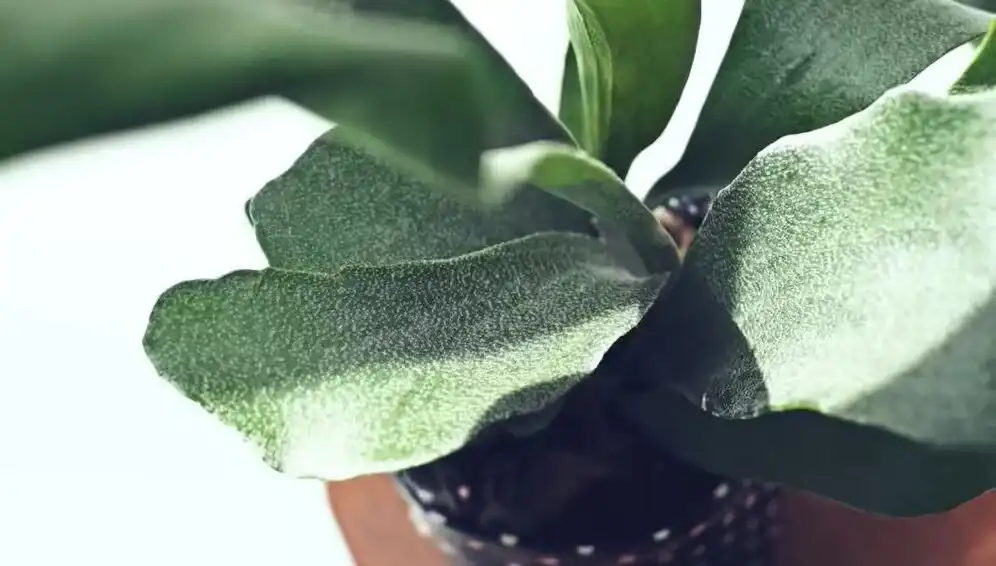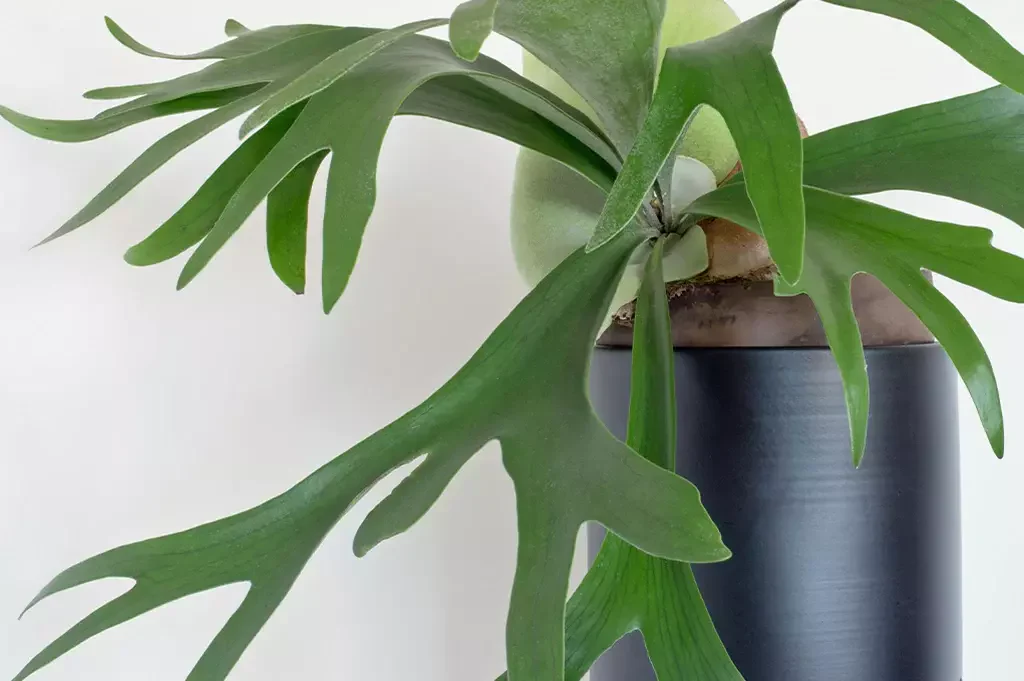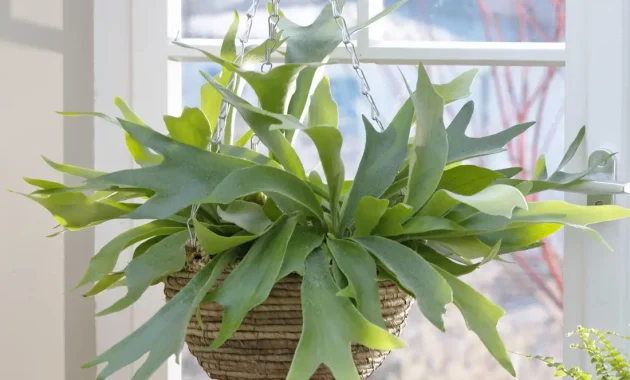If you’re looking for an exotic plant to add to your collection, Platycerium Bifurcatum, commonly known as the Staghorn Fern, is an excellent choice. This beautiful fern is native to tropical regions and is known for its unique antler-like appearance. However, caring for a Staghorn Fern requires some effort and knowledge to ensure it thrives in your environment.
Key Takeaways:
- Platycerium Bifurcatum, also known as the Staghorn Fern, is an exotic plant native to tropical regions.
- Proper Platycerium Bifurcatum care is essential for the health and growth of this unique fern.
- Lighting, watering, fertilizing, and maintenance are crucial aspects of caring for Staghorn Ferns.
Caring for Platycerium Bifurcatum: A Comprehensive Guide
Before you can provide the best care for your Platycerium Bifurcatum, you need to understand the nature of this stunning Staghorn Fern. Native to Southeast Asia and Australia, this species grows as an epiphyte, meaning it attaches itself to trees and other structures without harming them.
As a caregiver, it is essential to replicate the natural growing conditions of your plant as much as possible. Platycerium Bifurcatum prefers a humid environment with bright, indirect light and moderate temperatures.

Here are some key tips for caring for your Platycerium Bifurcatum:
Lighting and Positioning
Staghorn Ferns prefer bright, indirect light. Indoors, place your plant near a window with filtered sunlight. Outdoors, make sure it’s under a tree canopy or in a shaded area. Too much direct sunlight can cause the leaves to burn, while too little light can stunt growth.
Watering and Humidity
Avoid overwatering your Platycerium Bifurcatum. You can test the moisture level of the topsoil with your finger. Water your plant when the top inch of soil is dry. Additionally, misting your plant daily can help maintain humidity levels.
Fertilizing and Nutrients
Your Staghorn Fern requires regular feeding to maintain its healthy appearance. Use a balanced, water-soluble fertilizer once a month during the growing season. Additionally, organic matter such as bark or compost can be used as a soil amendment to provide nutrients and maintain the right pH level.
Maintenance and Troubleshooting
Regular maintenance tasks include grooming your plant to remove any dead fronds or debris and dividing it when it becomes too large for its container. Common problems with Platycerium Bifurcatum include fungal infections and insect infestations. If you notice any issues, isolate your plant and treat it with appropriate solutions such as insecticidal soap or fungicide.
By following these simple tips and techniques, you can keep your Platycerium Bifurcatum healthy and happy for years to come.

Lighting and Positioning
Platycerium Bifurcatum thrives under the right lighting conditions. This fern enjoys bright, indirect light but needs protection from direct sunlight to prevent burns. If you’re growing it indoors, choose a spot that gets plenty of natural light throughout the day, but avoid placing it in direct sunlight.
If you’re growing your Staghorn Fern outdoors, opt for a shaded area, especially during the hottest parts of the day. You can also position it under deciduous trees that provide filtered light and shade during the summer while allowing more sunlight it during the winter.
Indoors
If you’re growing your Platycerium Bifurcatum indoors, you can place it near an east or west-facing window where it can get plenty of natural light. Avoid placing it near air conditioning units or heaters as they tend to dry out the air and cause damage to the fern. You can also supplement the natural light with fluorescent or LED grow lights to keep your fern healthy and happy.
Outdoors
When positioning your Staghorn Fern outdoors, make sure it is protected from strong winds, direct sunlight, and extreme temperatures. You can hang it from a tree branch or mount it on a wooden board or tree trunk for a natural look.
If your fern is mounted on a board, use a wire or sturdy string to attach it to a shaded area, making sure it is secure and unlikely to fall during heavy rains or strong winds.
| Type of light | Duration | Frequency |
|---|---|---|
| Bright, indirect light | 6-8 hours | Daily |
| Fluorescent or LED grow lights | 12-14 hours | Daily |
Remember to rotate your Staghorn Fern periodically to ensure that all sides receive adequate light exposure.
Watering and Humidity
Watering and humidity are critical factors in keeping your Platycerium Bifurcatum healthy. The key to watering your Staghorn Fern is to find the right balance between keeping it moist and avoiding over-watering. Over-watering can be fatal to your plant, while under-watering can lead to dehydration and damage.
The best way to water your Platycerium Bifurcatum is by soaking its roots in water for 10-20 minutes once per week. This ensures that the plant has ample time to absorb water and distribute it evenly throughout its body. However, do not let your plant sit in standing water for too long, as it can lead to root rot.
The frequency of watering may vary depending on the climate, humidity, and temperature of your environment. A good rule of thumb is to monitor the soil’s moisture level and water only when it begins to dry out. Make sure to use room temperature water, as cold water can shock your plant.
Humidity is vital for the health and growth of your Staghorn Fern. Platycerium Bifurcatum thrives in high humidity levels of 50-80%. You can increase the humidity by misting your plant with water daily or by placing a humidifier nearby. You can also create a humid environment by placing a tray filled with water near your plant. As the water evaporates, it can increase the humidity around the plant.
Proper watering and humidity levels can help your Platycerium Bifurcatum thrive. Following these simple care instructions will help you keep your Staghorn Fern healthy and happy.
Fertilizing and Nutrients
Platycerium Bifurcatum requires regular fertilization to maintain its healthy growth and vibrant appearance. Using a balanced and appropriate fertilizer is vital in providing your Staghorn Fern with the necessary nutrients it needs.
Fertilize your Platycerium Bifurcatum once every two weeks during the growing season (spring and summer) and once every four to six weeks in the dormant season (fall and winter). A recommended fertilizer for this fern is a balanced, water-soluble fertilizer with an NPK (Nitrogen, Phosphorous, Potassium) ratio of 1:1:1. Alternatively, use a houseplant fertilizer with an NPK ratio of 20-20-20 or 10-10-10.
When fertilizing your Staghorn Fern, dilute the fertilizer to half the recommended strength. Over-fertilizing can damage the plant and cause yellowing or wilting of the leaves.
In addition to fertilizers, organic matter such as compost or aged animal manure can be used to provide additional nutrients. However, it’s important to avoid placing the organic matter directly on the fern as it can cause burns to the plant. Instead, add it to the soil mix or apply it as a top dressing around the base of the fern.
Make sure to water your Platycerium Bifurcatum before fertilizing to avoid stressing the plant. In addition, consider using filtered or distilled water to prevent chlorine and other chemicals in tap water from causing damage to the plant.
Maintenance and Troubleshooting
Caring for your Platycerium Bifurcatum doesn’t stop at providing adequate lighting, watering, and feeding. Maintenance tasks are essential for keeping your Staghorn Fern healthy and thriving. Here are some tips to help you care for your plant:
Grooming and Dividing
As your Staghorn Fern grows, you may notice dead fronds or damaged foliage. Grooming your plant regularly will help keep it looking its best. Use sharp shears or scissors to cut off any dead or damaged fronds. Make sure to cut as close to the base as possible without damaging the plant’s core.
Dividing your Platycerium Bifurcatum is an excellent way to propagate your plant and maintain its health. The best time to divide your Staghorn Fern is in the spring or early summer when your plant is actively growing. Carefully remove your plant from its pot and separate the offsets from the parent plant. Make sure each offset has its roots and a few fronds.
Common Issues and Solutions
Like all plants, Platycerium Bifurcatum can fall prey to pests and diseases. Here are some common issues and their solutions:
Yellowing Fronds
If your plant’s fronds start to turn yellow, it may be a sign of overwatering or too much direct sunlight. Reduce your watering and move your plant to a shadier location to help it recover.
Brown Tips
Brown tips on your plant’s fronds can result from underwatering or low humidity levels. Increase your watering and mist your plant regularly to increase humidity.
Pests
Mealybugs, scale, and spider mites are common pests that can affect your Platycerium Bifurcatum. Use a natural insecticide or a cotton swab dipped in rubbing alcohol to remove any pests from your plant.
Conclusion
By following these tips for caring for Staghorn Ferns and Platycerium Bifurcatum, your plant can thrive and be a beautiful addition to your collection. Remember, regular maintenance is key to ensuring your plant stays healthy and happy.


